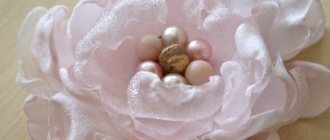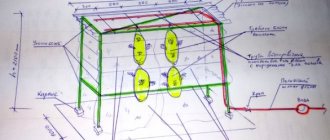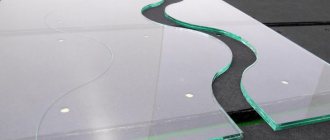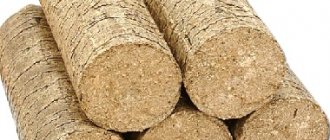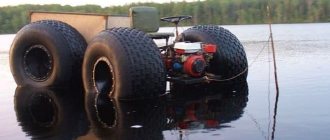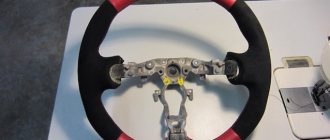Foods like mushrooms are valuable and nutritious foods. At home, growing oyster mushrooms and champignons has become widespread. Such cultivation guarantees the absence of carcinogenic substances and nitrates, which are easily absorbed by mushrooms.
Oyster mushrooms are recommended for use by patients with hypertension, cancer and some others. They slow down the aging process and help rejuvenate.
The article tells you how to grow mushrooms and make oyster mushroom mycelium with your own hands.
What is oyster mushroom mycelium, history of breeding
The mycelium of any mushroom, including oyster mushrooms, is called its vegetative body, in other words, the mycelium, consisting of the finest branched root-threads. The development of mycelium occurs inside the substrate and on its surface. This extensive network can be obtained both at home and using laboratory methods.
In their natural habitat, mushrooms reproduce mainly by spores. In order to answer the question of how to make oyster mushroom mycelium within the walls of the laboratory, scientists tried several different methods.
At first, fragments of mycelium for propagation in greenhouses specially adapted for this purpose were taken from the forest, in places where mushrooms accumulated, and then planted in prepared soil. After it was completely intertwined with mushroom threads, the substrate was dried and ready for breeding. The qualitative characteristics of such material were weak, the mycelium degenerated and produced meager yields.
Later in France they found a way to remove mycelium from mushroom spores under artificial conditions, which was very limited in application and also did not take root.
The latest and generally accepted patented method was the cultivation of oyster mushroom mycelium on the grain of almost any grain crop, sawdust, and straw.
Interesting Facts
- These are the first mushrooms to be grown in an artificial environment.
- Champignons are widely used in cosmetology. Lotions and masks based on these mushrooms are great for helping with skin problems.
- This type of mushroom is used in medicine and is a good aid in the fight against bronchial pathologies and diabetes mellitus types 1 and 2.
- Champignons contain chemicals that relieve headaches, help in the treatment of hepatitis and various forms of tuberculosis.
Methods of growing mushrooms
Oyster mushrooms are very unpretentious mushrooms that quickly produce crops. Already a month and a half after disembarkation, you can make the first collection. From a square meter of plot you usually get about ten kilograms of mushrooms per month.
Several methods can be used to grow this product:
- Extensive. This method imitates natural growth and requires certain areas. Tree stumps are prepared for it, cuts are made in them and first the oyster mushroom caps and then parts of the mycelium are placed in them. The method depends on weather conditions: under unfavorable circumstances, mushroom growth can take three months.
- Intensive. Mushrooms are grown this way, for example, in plastic bags. It is very effective, does not require much labor and is inexpensive.
To grow mushrooms at home, you can get mycelium in two ways: buy oyster mushroom mycelium, the price of which is currently about 150 rubles. per kilo, or make it yourself.
What kind of shelving should I put in the greenhouse?
In the greenhouse you need to install shelving or racks, depending on the technology for growing mycelium and the type of mushrooms. Furniture can be made of wood or metal, but the second option is preferable. The fact is that metal structures are easy to process and disinfect, and also do not rot in high humidity conditions. In addition, racks can be easily made from leftover metal, for example, using scraps of reinforcing bar.
Some types of fungi can settle on wood, causing its rapid destruction, so it is likely that wooden shelving will have a short service life.
The design of the rack should be chosen depending on the method of growing mushrooms. So, if you plan to grow them on pallets, you should place racks with several wide shelves in the greenhouse. For more convenient operation, they can be installed at a slight slope.
If you plan to grow mushrooms in briquettes with a substrate, it is better to place narrower shelves or racks in the greenhouse from which the briquettes can be hung. It should be noted that some people prefer to place them directly on the greenhouse floor.
Racks for hanging bags with substrate
Making mycelium
Oyster mushroom mycelium - mycelium - is planted in the substrate, where it will germinate. At home, you can grow oyster mushroom mycelium on wood or grain with your own hands. Cultivation occurs in three stages as follows:
- Obtaining royal mycelium. It is made in the laboratory from spores and stored in test tubes, or the material is propagated from pieces of mushroom tissue.
- Preparation of intermediate mycelium. At this stage, the mother culture is transferred from the test tubes where it was stored into a nutrient medium, where the basis for the seed mycelium begins to develop.
- Obtaining seed mycelium. The intermediate material is sown into the substrate, where it grows. Parts of this substrate are used to sow the area where the mushrooms will be directly grown.
Tools
To make mycelium from oyster mushrooms, you will need simple tools and materials:
- rubber medical gloves;
- glass bottles with a volume of 250-300 milliliters with a narrow neck;
- sterile cotton wool, gauze and aluminum foil;
- tweezers or sharp knife;
- test tubes (or medicine bottles);
- litmus tests (preferably, but not required);
- pipettes;
- alcohol lamp;
- thermometer;
- nutrient medium (agar);
- UV lamp.
The air in the room is burned with an ultraviolet lamp. This is a mandatory step! The environment contains from 5 to 20 thousand pathogenic microorganisms that can easily enter the grain and destroy the nascent mycelium.
How to prepare the base for planting
To obtain a good harvest, it is necessary to properly prepare the soil for planting. The manufacturing technology requires that for this you need to grind dry and clean husks, straw and husks (barley or wheat), and then heat treat them. These actions will remove from the composition the insects that got into it during collection.
In order to thermally treat the substrate, it is placed in a large metal basin, filled with hot water (70 ° C) and boiled for a couple of hours, after which the liquid is drained and the mass is cooled to room temperature. To check moisture saturation, a small amount of the mixture is squeezed in a fist: for normal humidity (about 70%), little moisture or nothing at all should come out; overmoistening is not allowed.
For growing, both a greenhouse with stumps installed in it and large plastic bags on the balcony at home are suitable. Below we will discuss how to prepare oyster mushroom mycelium at home, plant and grow a mushroom crop. Oyster mushroom is the only mushroom that is easy to grow if all the necessary conditions are met.
Reviews
Grigory 45 years old, Rostov
I really liked the method of growing porcini mushrooms and chanterelles on my plot. It’s not particularly clear through which attachment the mushrooms are rolled into the meat grinder, probably with large holes. I will definitely collect forest soil and water it with mushroom spores.
Stepan 50 years old, St. Petersburg
When growing mushrooms on stumps or logs, do not forget about snails; they destroy the mycelium before you know it.
Elena 43 years old, Volgograd
I would like to clarify that growing oyster mushrooms on sunflower husks is quite an interesting option. When buying mushrooms at the market, I saw that the husks were stuck to them. And the mushrooms tasted very good.
Natalya 32 years old, Chelyabinsk
Be sure to try planting mushrooms in a flower pot or bucket at home! The result will please you!
Oyster mushroom mycelium at home: stage one
To obtain royal mycelium, parts of the fruiting body of fresh mushrooms are taken. The oyster mushroom needs to be divided in half and a small piece cut out from the stem. Then it must be dipped in a solution of hydrogen peroxide for disinfection - the material is ready for planting in a nutrient medium.
Then the treated piece is placed in a container with a nutrient substance and closed with a stopper disinfected by fire. Such home production of oyster mushroom mycelium requires mandatory sterility, therefore, after processing, the material should not be touched with hands, but taken with auxiliary tools; the room must also be kept clean.
A closed container with seedling material placed inside in an inclined position is left in the dark for a couple of weeks.
The nutrient medium in this production can be agar from wort, carrots, oatmeal, potatoes or glucose. After preparation, it is sterilized, poured into containers and waited for it to harden, after which a piece of mushroom is added.
Tools
Fungal mycelium in biology.
what is it, mycelium for growing champignons, oyster mushrooms, chanterelles, porcini To make mycelium from oyster mushrooms, you will need simple tools and materials:
- rubber medical gloves;
- glass bottles with a volume of 250-300 milliliters with a narrow neck;
- sterile cotton wool, gauze and aluminum foil;
- tweezers or sharp knife;
- test tubes (or medicine bottles);
- litmus tests (preferably, but not required);
- pipettes;
- alcohol lamp;
- thermometer;
- nutrient medium (agar);
- UV lamp.
The air in the room is burned with an ultraviolet lamp. This is a mandatory step! The environment contains from 5 to 20 thousand pathogenic microorganisms that can easily enter the grain and destroy the nascent mycelium.
Stage two: obtaining intermediate mycelium
The second stage is the direct cultivation of oyster mushroom mycelium. The technology for producing intermediate mycelium of the oyster mushroom requires the use of cereal grains. For these purposes, healthy, high-quality grains are used, which are boiled for fifteen minutes in a ratio of material and water of one to two. Then the boiled grains must be thoroughly dried and mixed with calcium carbonate and gypsum.
Next, the mixture is placed in glass containers, filling them two-thirds, and sterilized. After processing, pieces of the nutrient medium prepared earlier are placed into the resulting substance. After two to three weeks, when the mycelium has grown, it can be stored, having first been placed in plastic bags. The mycelium can be stored for three months at temperatures from zero to twenty degrees.
Properly prepared intermediate oyster mushroom mycelium with your own hands, which is developed and viable, looks like a lush white coating that has a pleasant mushroom smell.
To plant seed mycelium, perform similar actions, sowing larger containers. To do this, add one spoon of intermediate mycelium to liter jars. This prepares the substrate for further growing mushrooms on it.
Mycelium on cardboard
To obtain champignon mycelium, the best option would be brown corrugated cardboard, cleaned of any glue or paint stains. And planting material can be selected from mushroom waste.
Important! Utensils and tools used in work must be disinfected.
The technology for obtaining champignon mycelium on cardboard is very simple:
- cardboard, cut into small pieces, is soaked in boiled, lukewarm water for about an hour or more, and then laid out in a spacious plastic container with drainage holes;
- manually or using a knife, the champignon should be divided into fibers;
- Having removed the top layer of paper from the cardboard, you need to lay out the champignon pieces on a corrugated surface, first disinfecting them in peroxide, and cover the top with the removed paper;
- Lightly compact the layers to prevent air pockets from forming;
- to avoid drying out, the container is covered with plastic film, which must be removed every day and the cardboard mycelium plantation must be ventilated;
- The cardboard should not be allowed to dry out, so it must be moistened periodically;
- Planting champignon mycelium should be in a dark and warm place until the entire cardboard turns white from the overgrown mycelium - the process can last up to three months.
Having grown champignon mycelium on cardboard, you can plant this mycelium on the next sheet of cardboard. It will grow even faster on it, since information about the environment is transmitted genetically to the next generation of mushrooms. You can use part of the cardboard mycelium to obtain a new portion of champignon mycelium. The rest is used to colonize the substrate, for example, to populate bags with pasteurized straw or sawdust with cardboard mycelium. It grows well on other types of substrate - coffee grounds, tea leaves, paper.
Conditions for planting mycelium
You can grow oyster mushrooms in an old barn, stone garage or other suitable room. The criterion for its selection can be considered:
- the ability to create high air humidity, which should be maintained at 85-90%;
- maintaining the ambient temperature around 15-20 degrees - at higher temperatures, the mushrooms stop bearing fruit;
- creating a good ventilation system - the accumulation of carbon dioxide is unacceptable due to the high sensitivity of fungi to it;
- the possibility of sufficient lighting - sunlight without direct rays or fluorescent lamps for nine hours a day.
Mushroom growing technology
After you have grown oyster mushroom mycelium with your own hands, you can begin planting it, which is done as follows. One kilogram of substrate is laid out at the bottom of a plastic bag, and a layer of mycelium is placed on top of it, and so on layer by layer until the very top. The weight ratio of the substrate and mycelium in the bag should be 1:0.05. The mycelium should be placed closer to the walls of the bag, in which slits should be made to allow air to enter. The weight of the finished block is 13-15 kg.
After filling, the polyethylene blocks are left in the dark at a temperature of about plus twenty Celsius - a higher temperature can lead to the death of the mycelium, since inside the block it can be ten to fifteen degrees hotter.
After two weeks, the block looks like a white monolith. Before the appearance of primordia, the block is sprayed from time to time to maintain humidity and temperature conditions are strictly observed. After the appearance of primordia, after a couple of days they become full-fledged adult mushrooms. There is no need to water them during growth, but it is important to ventilate the room well. When the edges of the caps are aligned, the crop is ready to harvest.
Further propagation of mycelium
If the task is to further propagate the champignon mycelium, the contents of the test tubes are added to large jars filled 2/3 with substrate. This procedure also requires sterile conditions:
- a depression is prepared in the substrate contained in the jar, after which it is tightly closed with a metal lid;
- a hole must be made in it, closed with a soft stopper;
- jars prepared in this way are placed in autoclaves for 2-hour sterilization under pressure (2 atm.);
- jars should cool in a sterile room;
- when the temperature drops to 24 degrees, you can add a mother culture of champignons to the substrate.
Manipulations are carried out over a burner flame. Having opened the test tube, a fungal culture is removed from it using an inoculation loop. Quickly removing the cork from the jar hole, insert the champignon mycelium into the recess in the substrate and close the jar.
Conditions for the preservation of mycelium
In industrial conditions, the mycelium is stored in low-temperature conditions or in liquid nitrogen. This content allows you to maximally preserve the properties of the material and its germination without loss of quality. The process of freezing and subsequent defrosting for disembarkation is carried out slowly under the supervision of specialists.
For home production, it is best to store mycelium in types of refrigerators that allow the freezer temperature to be set within minus twenty degrees Celsius. This will allow the material not to deteriorate and lose its qualities.
After defrosting for a short time, the mycelium restores its vegetative functions.
It is important to avoid repeated sudden changes in temperature conditions, that is, defrosting and re-freezing. This can significantly deteriorate the quality of the mycelium, which, accordingly, will negatively affect the yield of the mycelium.
Useful tips for mushroom pickers
To successfully grow mycelium and mushroom harvest, the following rules must be observed:
- The ideal substrate is sawdust from deciduous trees.
- The color of the sawdust used should be white or yellow, this will guarantee its freshness.
- The substrate should have a fresh smell, without any rot.
- When transporting mycelium, the required humidity should be maintained within 30-45%. The same conditions must be observed inside the plastic bag in which oyster mushrooms are grown.
- One block bag measuring 35 x 75 cm will require about 300 grams of mycelium; you need to know this in order to accurately calculate the required amount of material. Buying for future use or thawing excess amounts of mycelium is extremely undesirable due to short shelf life and loss of seed quality.
- When producing mycelium and planting it in the substrate, it is necessary to follow strict sanitation rules to avoid infection by pests: containers, tools and hands must be disinfected.
In general, if you follow the rules and technology for growing oyster mushroom mycelium, and then the mushroom itself, you can achieve good results with not a very large investment of money and effort. With careful attention to the process, even a beginner can handle it.
Pages
How to grow your own coffee tree
Questions can only be asked after registration. Please login or register.
One forum visitor made a completely legitimate remark to me, like you are discussing a lot of clever things here about growing mycelium, there is a lot of information, but you won’t understand anything specifically. Therefore, I have a specific proposal. I am publishing a link to a well-known description, specific and with a photo. I am writing my comments. Also, please leave your comments to those who REALLY made mycelium. https://gribovet.narod.ru/zernomicel.htm My comments are as follows:
1. This description shows that mold has appeared on some of the cans. Therefore, to increase sterility, I: - when cooking grain, added 1-2% hydrogen peroxide to the water - when drying grain and adding mycelium into jars - used a homemade quartz lamp, described in the section “Appliances” - everything that could get into the grain after boiling the grain the mycelium (hands, tools) was treated with a 1-3% solution of hydrogen peroxide - sterilization was definitely carried out in a pressure cooker for at least 2 hours. When drying the grain, chalk was added, mixed in half with gypsum, in the amount of 1% of the weight of the grain. Oats were used as grain. When washing it floats up, it’s easier to wash it - in my opinion. Oats clump less as mycelium grows. 3. Mycelium growth was carried out in plastic bags. After adding the mycelium, the packages were placed in rectangular plastic boxes. It is more comfortable . The result was neat rectangular blocks. And cooler companies do this. I received mycelium in such blocks from a well-known company from Rostov/n/a. During the growth process, the mycelium consumes oxygen, the film covers the mycelium - as in a vacuum. 4. As added mycelium, you can use not only grain mycelium, but also mycelium on wooden sticks. In general, I consider the above technology to be outdated. Now I am working on an option with polypropylene bags, which are used for sterilization.
Remove this link, the article and photos from it are stolen. Or replace it with the original from the mushroom grower website. I specifically do not cite the real site, since the author of the article (original) believes that mycelium on sticks is his invention. And I don’t share his methods; I think that there is more advertising for “his” invention.
I don't know that the articles and photos were stolen. If so, please provide a link to the original. And mycelium on sticks was invented abroad much earlier. By the way, if you cook hardwood sticks, mycelium also grew on them. You can use toothpicks that are soaked in a starch solution. Here's an idea for Kotyaro: let him do business on sticks.
This is what mycelium looks like during the growing process. Plastic containers are very convenient. There’s no need to scoop it out with a spoon like in jars. The container produces a neat block of mycelium that is easy to remove from the container.
